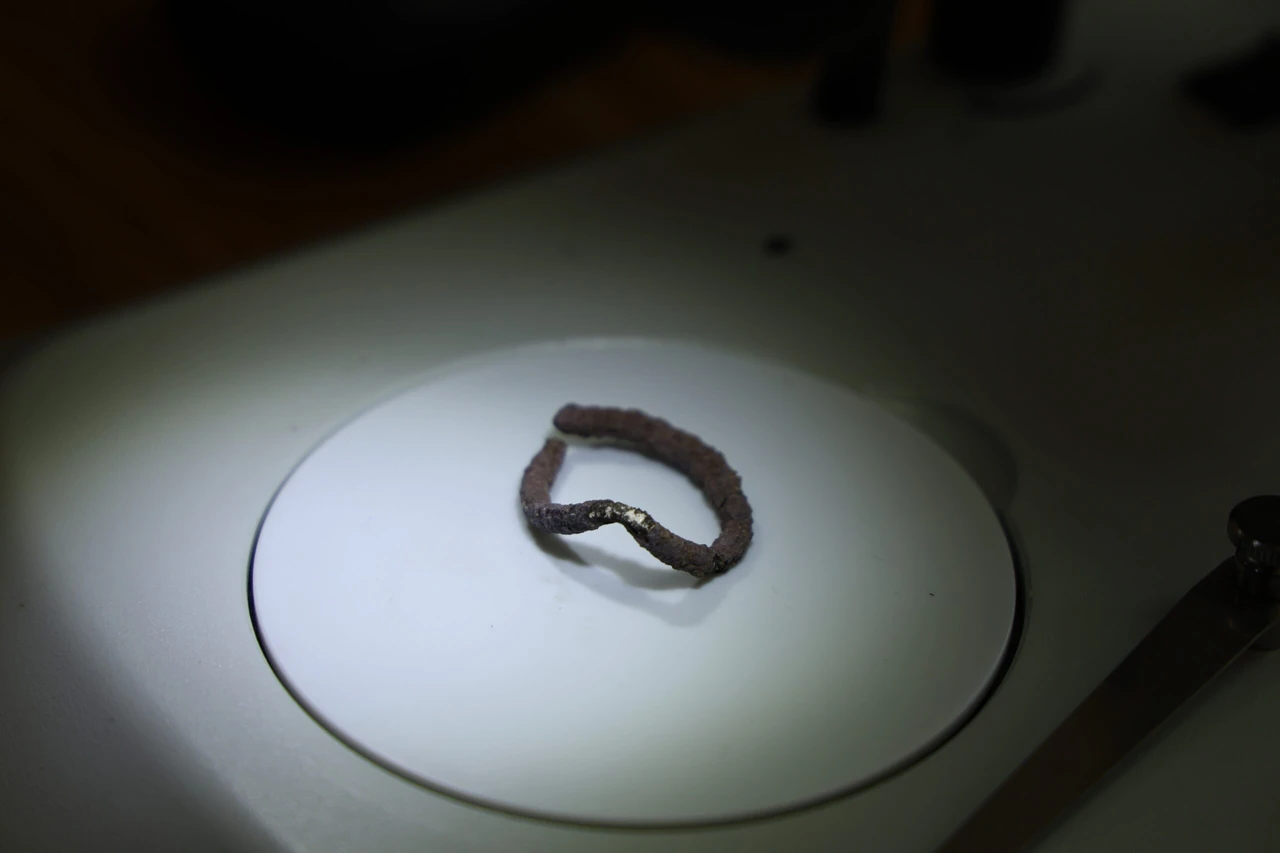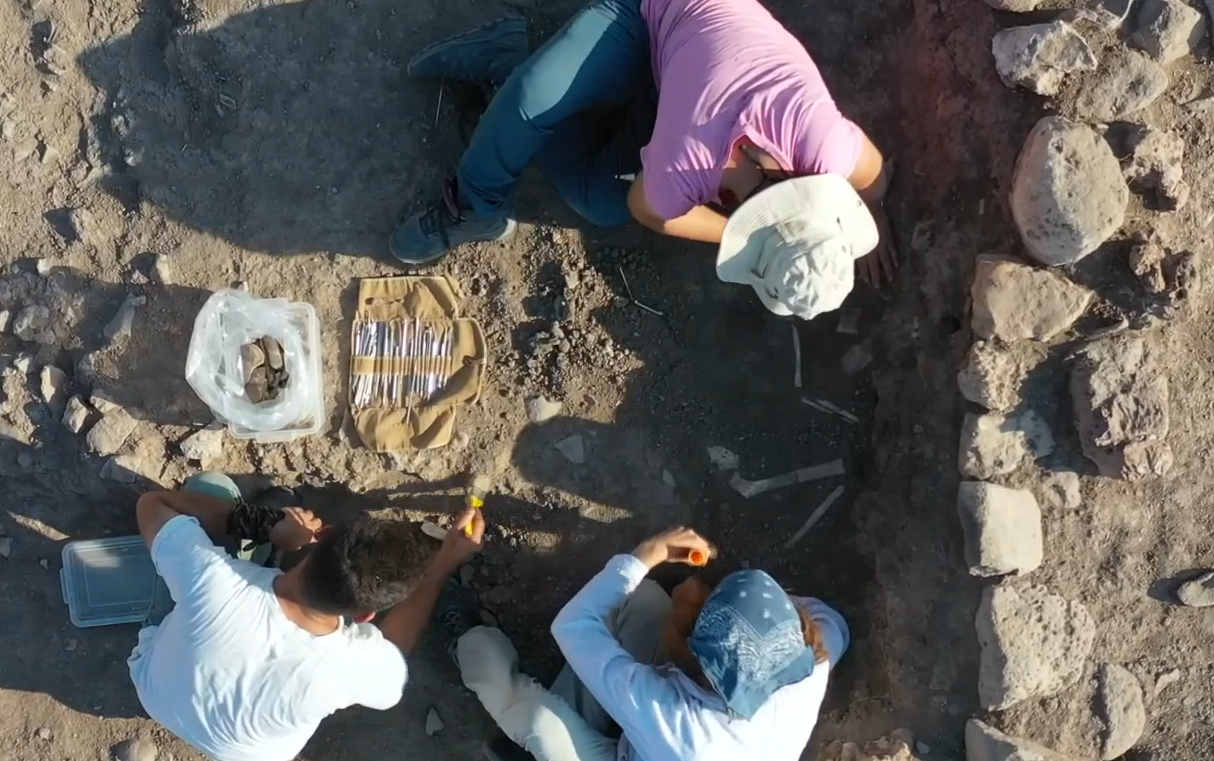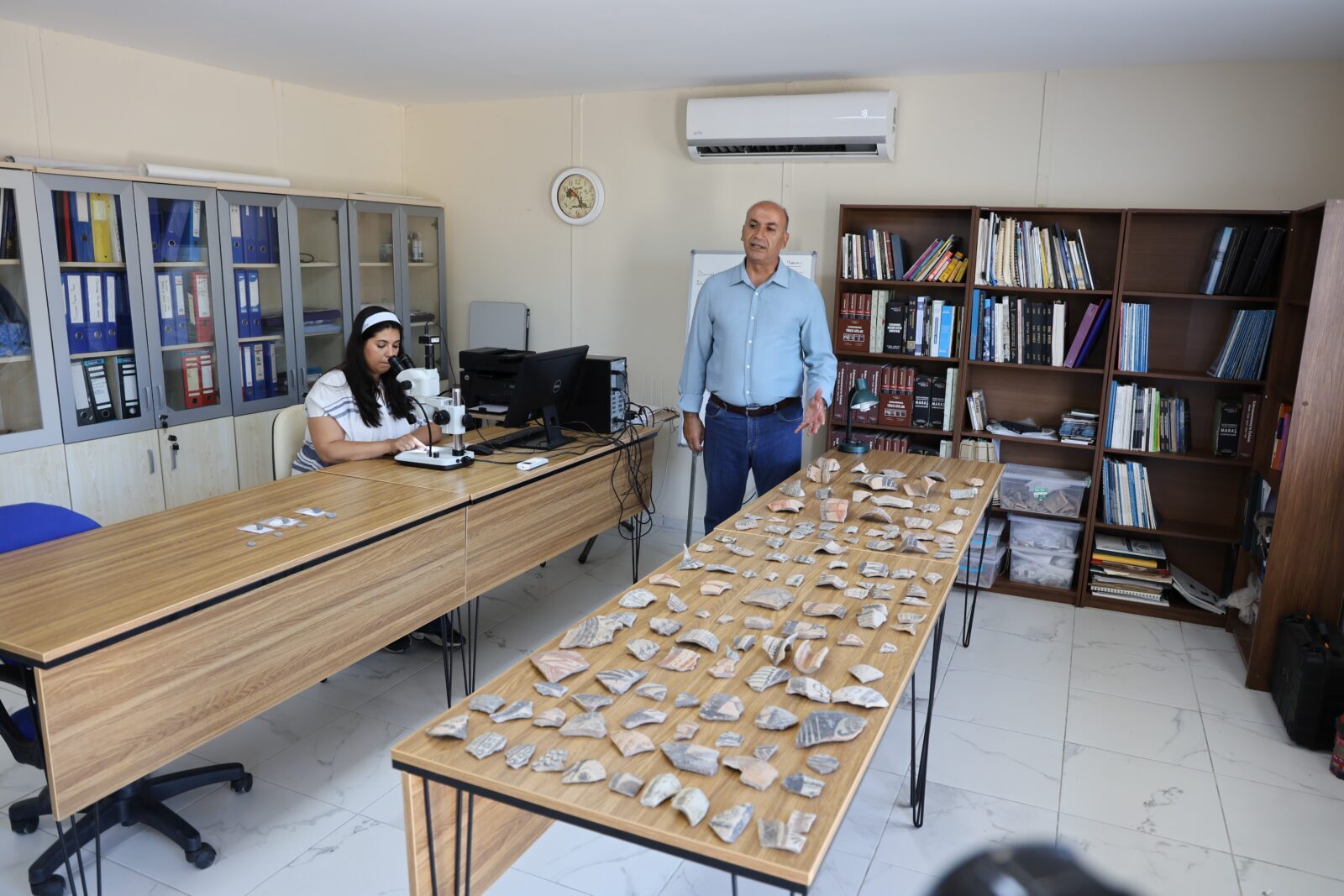7,600-year old child skeleton, silver ring discovered at Türkiye’s Domuztepe Hoyuk
 Excavations at Kahramanmaras Domuztepe Hoyugu uncovered a 7,600-year-old silver ring, estimated to have been used for babies, Türkiye, September 12, 2024 (IHA Photo)
Excavations at Kahramanmaras Domuztepe Hoyugu uncovered a 7,600-year-old silver ring, estimated to have been used for babies, Türkiye, September 12, 2024 (IHA Photo)
Excavations at Domuztepe Hoyuk in Kahramanmaras’ Turkoglu district continue to reveal Türkiye’s ancient riches.
In a significant discovery in 2024, archaeologists unearthed the skeleton of a child dating back 7,600 years, along with a silver ring believed to have been used for infants.
The excavation is led by Associate professor Halil Tekin of Hacettepe University and supported by a 15-member team of archaeologists and scientists.
Domuztepe Hoyuk, one of the largest Neolithic settlements in Anatolia, has been under continuous investigation for nearly 28 years, with Turkish experts taking the lead since 2013.
This year’s findings add to the site’s remarkable history, shedding light on the burial practices and artifacts of ancient Anatolia.

Silver rings linked to Neolithic children
One of the most fascinating discoveries during this season’s excavation is the unearthing of silver rings, estimated to be 7,600 years old, believed to have been worn by infants.
Tekin emphasized the significance of this find, noting that prior to this discovery, silver rings were not thought to have existed in Anatolia until around 5,500 years ago.
“These rings were likely placed on a baby’s wrist, marking an important cultural tradition. Their analysis will provide more information about the materials and techniques used during this period,” he explained.
Besides the silver rings, Tekin and his team discovered a burial site containing the remains of three children, further underscoring the importance of Domuztepe in understanding ancient Anatolian burial practices.

Domuztepe Hoyuk’s key finds from 2024 excavations
The 2024 excavation season also yielded another valuable find: large storage silos used for grain and other supplies, providing insight into the storage methods of Neolithic communities.
These discoveries will help researchers better understand the daily lives and survival strategies of the people who lived in Domuztepe thousands of years ago.
“The 2024 excavation season ended last week. One of our most important discoveries was the large storage areas we identified as silos. The silver ring we found, dating back 7,600 years, is significant because we didn’t know such artifacts existed until 5,500 years ago. We also found three children’s graves among the central structures,” Tekin said.

Glimpse into Neolithic world of Türkiye
The ongoing discoveries at Domuztepe Hoyuk offer a unique glimpse into Türkiye’s ancient past, revealing not only burial traditions but also the intricate craftsmanship of early Anatolian societies.
The excavation site, first explored by foreign archaeologists in 1996, continues to be a critical location for understanding the Neolithic period.
As Tekin’s team prepares for further analysis of the silver rings and skeletal remains, these finds contribute to a growing body of evidence that Türkiye is home to some of the world’s most important archaeological treasures, with each excavation offering a new window into the country’s rich history.



